by Khalid Bashir Ahmad
In all, the Report documents 125 names of persons, with their age, addresses and cause of death, killed in different parts of Kashmir between 1931 and 1947. Of these, it records 22 as killed in Srinagar at the Central Jail and the Jama Masjid and one at Ompora Budgam on July 13, 1931.
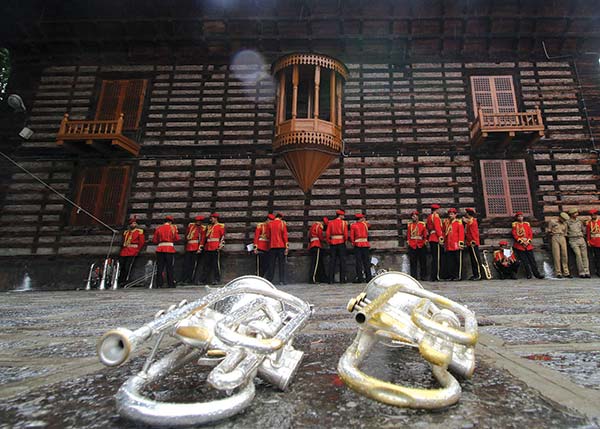
For the past 90 years, July 13, is observed as Martyrs Day in Kashmir in memory of about two dozen people killed by the troops of the last Dogra ruler, Maharaja Hari Singh, in Srinagar this day in 1931. The day was observed both at the government and public level until August 5, 2019, when Article 370 of the Indian Constitution guaranteeing internal autonomy to Jammu and Kashmir was scrapped by a Presidential Order and the State bifurcated into two Union Territories. In 2020, the State holiday in commemoration of July 13, was also withdrawn.
The Celebrations
Historically, the Chief Minister of the State, accompanied by ministerial colleagues and high ranking civil and police officers, would visit the Martyrs Graveyard at the Naqshband Sahib’s shrine near Nowhatta in the morning and lay wreaths at the graves of those killed on July 13, 1931. A contingent of the Jammu and Kashmir Armed Police would present a gun salute and lower their arms in respect of the memory of the martyrs.
During the day, political parties and groups would follow the suit and pay homage at the memorial. The National Conference under Sheikh Mohammad Abdullah and his son, Farooq Abdullah, and the Awami Majlis Amal of Mirwaiz Molvi Mohammad Farooq would take out processions passing through different parts of the city before arriving at the Martyrs Graveyard to offer their respects. The processions, originating from the Mujahid Manzil and the Jama Masjid, respectively, were taken out with pomp and show and included contingents of bicycle and horse riding men and drummers and bagpipers playing different tunes.
In order to avoid clashes between the workers of the two traditionally rival parties, an arrangement had been worked out according to which the Awami Majlis Amal would take out the procession in the morning while the National Conference would do it in the afternoon. Yet, there were occasions when the two sides clashed with each other resulting in injuries to several people. These processions were disallowed following the outbreak of militancy in Kashmir in 1989. Since then, only the official function under strict security cover was permitted.
During the Governor’s Rule in the State, every incumbent Governor would distance himself from the official ceremony while the Government was represented by the Divisional Commissioner Kashmir who would lay a wreath at the Martyrs Graveyard. Following the imposition of Governor’s Rule in 2018, Khurshid Ahmad Ganai, Advisor to the Governor, attended the official wreath-laying ceremony. However, the Governors would ritualistically issue a message on the eve of July 13, ‘highlighting traditional pluralistic ethos and harmony of Jammu and Kashmir’, avoiding any mention of the martyrs or paying tribute to them.
The last such message was issued by Governor Satya Pal Malik in 2019. His predecessors, N N Vohra, S K Sinha and KV Krishna Rao also followed this practice which was discontinued by the Raj Bhawan in 2020.
The Martyrs
The number of people killed on July 13, 1931, is generally quoted as 22. Sheikh Mohammad Abdullah has mentioned this number (Aatash-i-Chinar [Gulshan] p 64] without giving names of the fallen persons. Political leader and one time Abdullah’s associate, Munshi Mohammad Ishaq (Nida-e-Haq, p 107), an eyewitness to the developments of 1931, corroborates the number but, like Sheikh Mohammad Abdullah, mentions no names.
Author and scholar, Molvi Mohammad Ibrahim, [Koshur Encyclopedia, Vol I, p 350-51, published by the Jammu & Kashmir Academy of Art, Culture and Languages in 1986] gives the following 22 names with residential addresses:
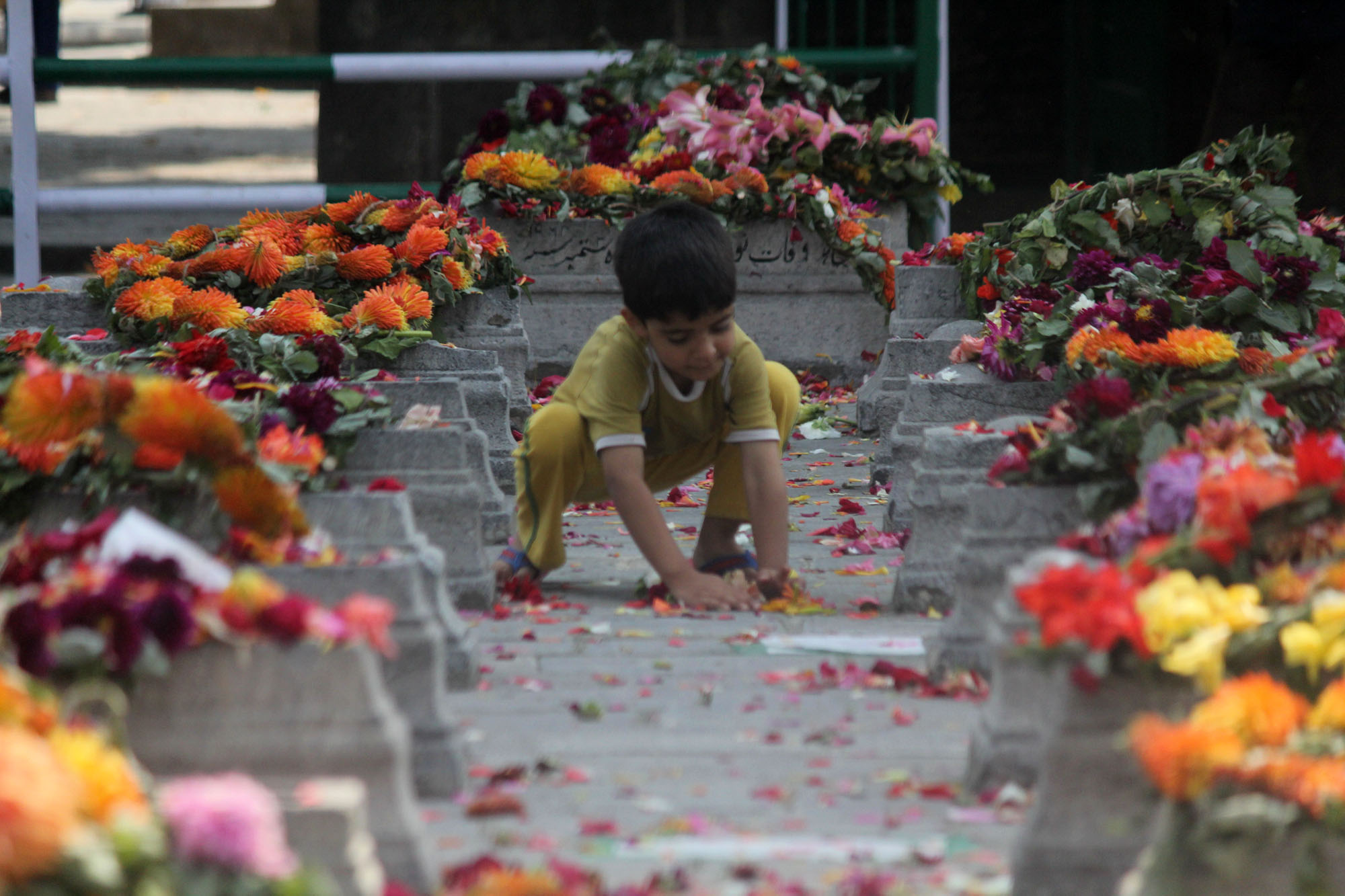
KL Image: Bilal Bahadur
Amir Joo Jandgaroo (Gojwara), Akbar Dar (Osar Bhavan), Mohammad Teli (Osar Bhavan), Mohammad Subhan Rather (Osar Bhavan), Abdullah Ahangar (Narabal Nowshehra), Abdullah Lone (Mokhte Pokhar), Mohammad Shaban Misger (Mokhte Pokhar), Khaliq Shora (Anzimar), Mohammad Sultan Chola (Aram Masjid Khanyar), Ahmad Bhat (Fateh Kadal), Mohammad Sultan Khan (Basant Bagh), Nasiruddin (Chinkral Mohalla), Abdul Salam Hajam (Guzarbal), Mohammad Akbar (Zaldagar), Ghulam Nabi Kanewal (Mohalla Pandan), Abdullah Najar (Ompora), Ghulam Mohammad Sofi (Daribal), Mohammad Subhan Khan (Nawab Bazar), Abdul Gani Makai (Nawa Kadal), Ghulam Mohammad Naqash (Kadi Kadal), Ghulam Mohammad Halwai (Jama Masjid) and Ghulam Qadir Bhat (Mohalla Bahauddin Sahib).
Pir Mohammad Afzal Makhdoomi, another political leader and eyewitness of the events, claims that 23 persons were killed on July 13, 1931. [Kashmir ki Tehreek-e-Azadi: Khwaab, Azaab Saraab, p 73-74]. The one additional name given by him is Ghulam Rasool Dardah, a resident of Qutubuddin Pora. There is a slight variation in the names or addresses of some Martyrs as given by Molvi Mohammad Ibrahim and Makhdoomi. Mohammad Subhan Rather in Ibrahim’s account is Mohammad Sultan Rather in Makhdoomi’s description. Likewise, Mohammad Shaban Misger, Mohammad Sultan Chola, Ghulam Nabi Kanewal, and Ghulam Mohammad Sofi in the former’s account figure as Mohammad Usman Misger, Mohammad Ramzan Chola, Ghulam Nabi Kalewal and Ghulam Rasool Sofi in Makhdoomi’s version.
Also, there are some variations in the addresses of some martyrs as given out by the two authors. Osar Bhavan and Mokhte Pokhar in Ibrahim’s account are Onta Bhavan and Nalabal Nowshera in that of Makhdoomi. These could be same places, in both cases, with different names.
Mridu Rai mentions “the death toll of twenty-two demonstrators and one policeman” [Martyrs’ Days: Memorializing 13 July 1931 in Kashmir, (PDF) Martyrs’ Days: Memorializing 13 July 1931 in Kashmir * (researchgate.net)]. She also does not state any names.
Late Sadruddin Mujahid, a close associate of Sheikh Mohammad Abdullah and leader of the erstwhile Plebiscite Front, who took part in the 1931 Agitation as a student of Islamia High School, had identified 108 persons with their residential addresses martyred between July 1931 and 1938 in different parts of Kashmir and Rajouri and Poonch in Jammu Province [Weekly Khalid-i-Jadeed, July 13, 1981]. According to him, 20 persons were killed at the Central Jail on July 13, 1931, while six others were gunned down in other parts of the city including 2 each at Nawakadal and Nowshera and one each at Jama Masjid and Gaw Kadal.
There are variations in the names he and Makhdoomi have quoted. Ghulam Qadir Bhat of Bahauddin Sahib in Makhdoomi’s account is Ghulam Qadir Khan in Mujahid’s list. Similarly, Ghulam Rasool Sofi, Mohammad Sultan Rather, Akbar Dar and Abdul Gani Makai in Makhdoomi’s list change, respectively, to Ghulam Mohammad Sfi, Ghulam Ahmad Rather, Ghulam Ahmad Dar and Amiruddin Makai in Mujahid’s text. Assadullah Gilkar of Narparistan and Faqir Ali of Batamaloo mentioned by Mujid do not figure in Makhdoomi’s list.
G M Lone [Kashmir Life, online July 13, 2014] puts the death toll at 24. The two names he adds to the tally of 22 are Fakir Ali and Mughli, a female martyr. Pertinently, neither Ibrahim nor Makhdoomi mentions any female martyr among those killed on 13 July 1931. However, Mujahid has recorded a female martyr named Jana Bibi widow of Abdullah Lone, a resident of Khawjapora Nowshehra.
Dr Ghulam Hassan Khan, author of the Freedom Movement in Kashmir (1931-1940) [p 132] quoting Pir Mohammad Afzal Makhdoomi claims that ‘10 Muslims were killed and many others injured’ by police firing at the Central Jail [Aina (Weekly), October 30, 1971]. Of the injured, several died at the Jama Masjid where they had been relocated.
The Official Committee
These are individual accounts about the number of persons killed on July 13, 1931. One would, naturally, like to know the official position. I have accessed a document titled Report and Recommendations of the Martyrs Monument Committee presented in the Jammu and Kashmir Constituent Assembly in 1956. The Report also gives out 22 names of the persons killed on July 13, 1931, in Srinagar. The Constituent Assembly, it may be recalled, gave Jammu and Kashmir the (now scrapped) Constitution adopted on November 17, 1956, and, earlier, on February 15, 1954, ratified the Accession of the State to India signed by Maharaja Hari Singh in October 1947.
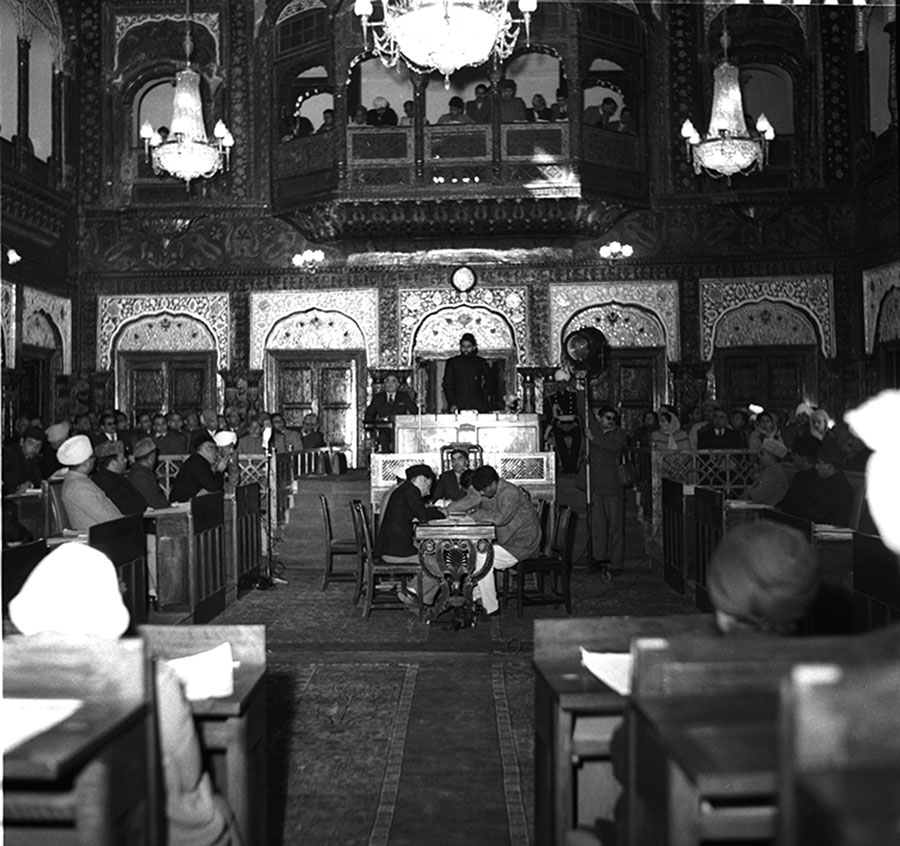
On April 14, 1953, barely four months before Sheikh Mohammad Abdullah was sacked, and arrested, as the Prime Minister of Jammu and Kashmir, a Martyrs Monuments Committee was set up in the light of a Resolution passed by the J&K Constituent Assembly. The Resolution reads:
“This Assembly resolves that good and suitable monuments be erected for those patriotic leaders who have sacrificed their lives in the fight against the invaders and autocracy in the Freedom Movement of Jammu & Kashmir and some monthly allowance be fixed for their descendants.”
Seventy-one days after the dismissal of Abdullah, the Committee was reconstituted on October 19, 1953, with the following composition:
Chairman Ghulam Rasool Renzu; Members S Kulbir Singh, Abdul Gani Trali, (and) Sheikh Mohammad Akbar
The Committee was tasked to (a) ascertain the correct names and particulars of the martyrs; (b) trace out their families and their dependents; (c) enquire into the circumstances which led to their martyrdom; (d) collect information regarding their life history; (e) find out if their dependents needed any financial help and, if so, to what extent; and (f) elicit public opinion on the type of the monuments proposed to be created.
The Report
Besides meeting the families of the martyrs, the Committee visited different places, including graveyards and cremation grounds, “to make enquiries on the spot and collect firsthand information”. Verification was also sought from the persons who had taken an active part in the Agitation of 1931. In certain cases relating to Jammu, the Committee referred to “the files available in Government records”.
Two years after its reconstitution, the Committee presented an interim report on October 10, 1955. The Report contained particulars of the martyrs as collected from various places throughout the State of Jammu and Kashmir, along with recommendations for remuneration and monthly allowances to their dependents. The Committee presented its Final Report and Recommendations on October 15, 1956, and admitted its incompleteness in so far as it could “not examine and investigate cases of Martyrs in Pakistan occupied State” including Master Abdul Aziz. These cases were left to the Legislative Assembly to investigate whenever it deemed it fit in future. The Committee recommended a total lump sum grant of Rs 76,000 and a lifetime recurring annual grant of Rs 17,880 to the deserving dependents of the Martyrs.
Recommendations
The Committee observed that there were certain cases where no dependents existed. There were also cases in Jammu where the dependents had already been recompensed. In respect of the cases of 1947, the Committee decided that “these should be sent to the Government with a view to ascertain whether any compensation had been paid to them as, it is believed, some dependents of Tribal Raid victims have been recompensed.” The Government was asked to provide them “whatever assistance it may deem fit.”
In its report, the Martyrs Monument Committee recommended that (a) a suitable monument be set up in Srinagar in the form of a Medical College, to be named ‘The Martyrs Memorial Medical College’ and situated at a central place, in commemoration of the Martyrs who laid down their lives “in the fight against invaders and the autocracy in the State”; (b) the graves of the Martyrs situated in distant areas in the State, which are in a dilapidated condition, be improved and the graveyards be enclosed and fenced in the form of the park; (c) the Information Department be asked to publish a book giving detailed accounts of the lives of Martyrs in the State. Some preliminary data collected by the Committee could be used for further investigation and research. The Committee observed that in order to give the Martyrs their proper place “in respect of National history” accounts of their lives be written by a Special agency of the Government and published for the general public, and (d) compensation in the form of lump-sum grants and monthly allowances, as recommended in the report, be granted to the dependents of the Martyrs.
Identifying The Slain
In all, the Report documents 125 names of persons, with their age, addresses and cause of death, killed in different parts of Kashmir between 1931 and 1947. Of these, it records 22 as killed in Srinagar at the Central Jail and the Jama Masjid and one at Ompora Budgam on July 13, 1931. These include:
- Nasar-ud-Din, 22, son of Samad Khan, resident of Chinkral Mohalla, killed in Jama Masjid by police firing.
- Abdul Khaliq Shora, 50, son of Samad Shora, resident of Anzimar, shot dead by the Police at the Central Jail.
- Mohammad Akbar, 40, son of Faqir Mohammad, resident of Zal Dagar, shot dead by the Police at the Central Jail.
- Ahmad Butt, 25, son of Qadir Bhat, resident of Fateh Kadal, died as a result of canning at by Police the Central Jail.
- Assadullah Gilkar, 20, son of Gaffar Bhat Gilkar, resident of Narparistan, died as a result of canning at by Police the Jama Masjid.
- Amirjoo Jandgroo, 36, son of Mohammad Mir Jandgroo, resident of Gojwara Nowhatta, died as a result of police firing at the Central Jail.
- Ghulam Mohammad Halwai, 23, son of Rahman Halwai, resident of Malik Sahib, shot down by the Police at the Central Jail.
- Ghulam Nabi Kalwal, 30, son of Abdul Kalwal, resident of Pandan Nowhatta, killed at the Central Jail.
- Ghulam Ahmad Naqash, 30, son of Sultan Naqash, resident of Kadi Kadal Nowhatta, killed at the Central Jail.
- Ghulam Rasool Doora, 27, son of Ali Mohammad Doora, resident of Gutapora Hawal, shot down by the Police at the Central Jail.
- Ghulam Qadir Khan, 26, son of Abdullah Khan, resident of Bahauddin Sahib Nowhatta, shot down by the Police at the Central Jail.
- Faqir Ali, (age not mentioned), son of Nasir-u-Din, resident of Batamaloo, shot in a mosque at Gaw Kadal where he had to escape police firing.
- Amir Din Makai, 35, son of Rasool Joo Makai, resident of Lakhriar, shot by military patrol at Dumba Kadal while going for Nimaz.
- Mohammad Shaban Makai, 60, son of Reham Makai, resident of Lakriar, shot dead at Dumba Kadalwhile he had gone to recover the body of his nephew.
- Mohammad Ramzan Chola, 36, resident of Ara Masjid Khanyar, shot by Police at the Central Jail.
- Ghulam Mohammad Sofi, 21, resident of Daribal, shot by Police at the Central Jail.
- Ghulam Mohammad Tili, 45, Ontabawan Nowshehra, killed in a procession near Dr. Shiv Ji’s estate
- Ahmad Rather, 30, resident of Ontabawan Nowshehra, killed in a procession near Nowshehra.
- Ahmad Dar, 30, son of Akbar Dar, resident of Ontabawan Nowshehra, killed in a procession near Nowshehra.
- Mohammad Abdullah Ahangar, 40, son of Karim Ahangar, shot dead by the military in a procession at Raj Kadal.
- Mohammad Usman Misger, 30, son-in-law and adopted son of Sidiq Loan, resident of Nalband Nowshehra, killed at the Central Jail.
- Ghulam Rasool Hakroo, 28, son of Ghat Jogi Lankar Rainawari, killed by military at the Jama Masjid.
- The Report has also documented one death in police firing at Ompora Budgam on July 13, 1931, itself. The victim is identified as Abli Najar, 34, son of Lassi Najar, resident of Ompora Budgam.
Outside Srinagar
The tragic incident of July 13, had its impact in other parts of Kashmir and Jammu where people protested against the killing and, in turn, faced bullets resulting in several deaths. These incidents happened at various places in 1931 claiming more lives.
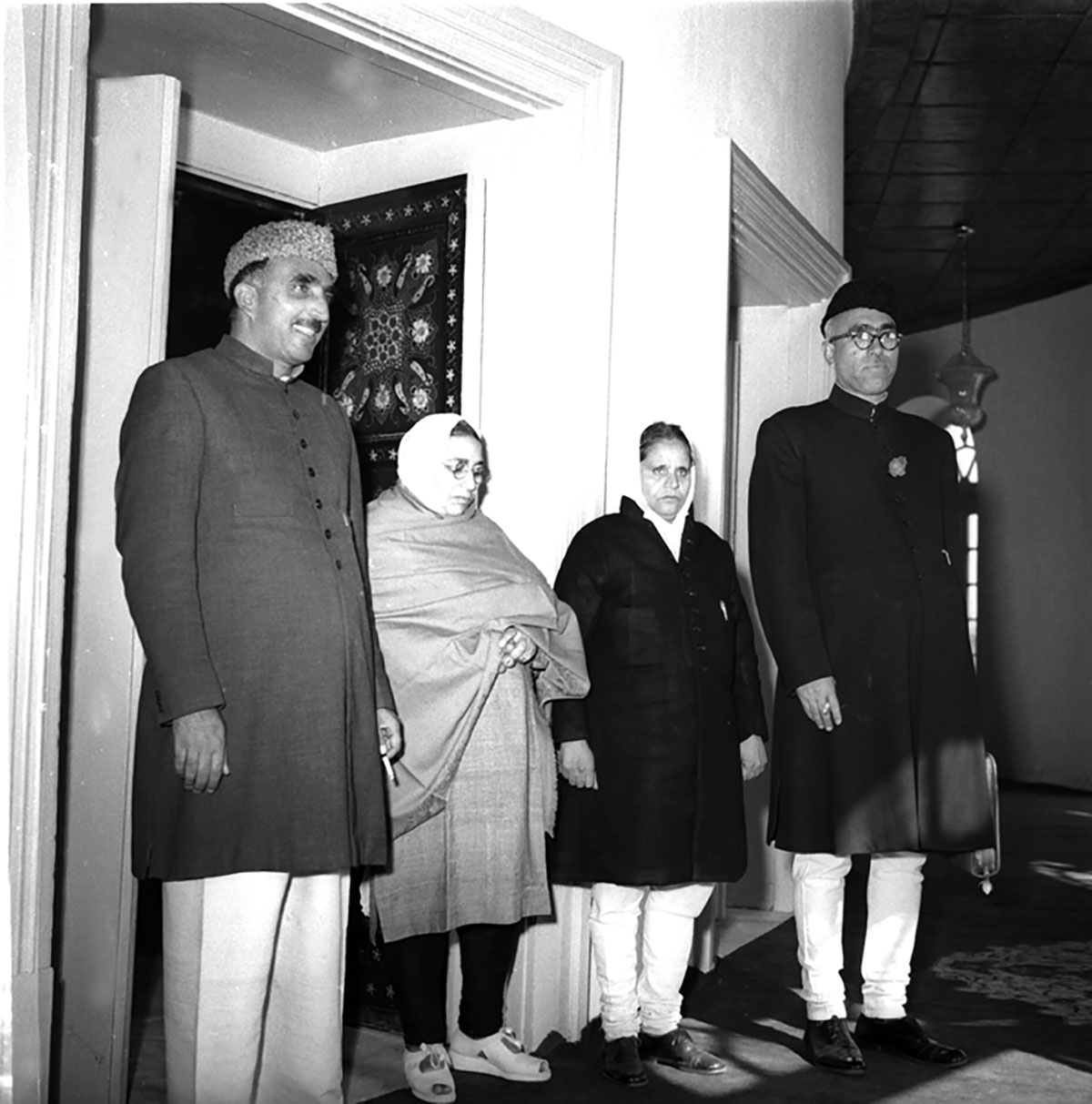
At Malakhnag Islamabad (Anantnag), 21 persons were killed in police firing on a procession. The dead included Razaq Ahangar, 55, son of Rahim Ahangar, resident of Hazratbal Islamabad, Ghulam Ahmad Malik, 50, son of Habib Malik, resident of Mohalla Qazi, Ward No. 2, Ghani Bhatt Kawa, 35, son of Rahman Bhat, resident of Girang, Ghani Darzi, 30, son of Ramzan Darzi, resident of Sarnal Payeen, Rahman Malik, 60, son of Mohammad Malik, resident of Mohalla Bazar Adda, Pir Mohammad Maqbool Shah, 40, son of Wali Shah, resident of Mohalla Qazi, Aziz Sofi Ali Waza, 50, son of Sidiq Waza, resident of Malakhnag, Kabir Shah Azad, 50, (parentage not known) resident of Mohalla Takia Chahekadan, Pir Ghani Shah, 40, son of Pir Hassan Shah, resident of Mohalla Dargapora, Habib Wani, 30, son of Samad Wani, resident of Mohalla Gujenag, Mohammad Pusha, 22, son of Aziz Pusha, resident of Qazi Mohalla, Ghulam Hussain Malik (Zargar), Shahid Ghulam Ahmad Malik alias Zargar, resident of Qazi Mohalla, Jamal Wagay, 25, son of Karim Wagay, resident of Qazi Mohalla, Ghulam Ahmad Zapoo, 36, son of Lassa Joo Chapoo, resident of Mohalla Shah Sahib, Ghulam Rasool Sheikh, 28, son of Qadir Sheikh, resident of Khat Bazar, Juma Wani, 19, son of Samad Wani, resident of Mohalla Gajnag, Subhan Sofi, 30, son of Wahab Sofi, resident of Mohalla Reshi, Mohammad Butt Chikan, 30, son of Ahmad Butt Chikan, resident of Mohalla Sarnal Payeen, Musmate Mukhti, 25, wife of Subhan Qasid, resident of Mohalla Bafinder, Ramzan Bhat Chiken, 20, son of Rehman Bhat Chiken, resident of Mohalla Sarnal Payeen, Ali Mohammad Reshi, 25, son of Wali Reshi, resident of Shah Sahib Maliknag and Abdul Ahad Mir, 60, son of Guffar Mir, resident of Shah Sahib Maliknag.
In Shopian, the Report records eight deaths including that of Abdul Qadus Tak, 30, son of Khalq Tak, resident of Tak Mohalla, Aziz Shah, 50, son of Sadiq Shah, resident of Chha Nachwara Malik Gund, Mahmad Dar, 40, son of Rashid Dar, resident of Kalroo Malik Gund, Sajida Banu, 35, wife of Imam Ahsan Shah, resident of Karla Masjid, Khazir Buth, 50, son of Lassa Buth, resident of Shopian, Wali Wani, (age not recorded), son of Abli Wani, resident of Battapora, Rahman Ahangar, (age not recorded), son of Sultan Ahangar, resident of Bonagam, and Mohammad Dar, (age not recorded), son of Reshi Dar, resident of Battapora.
In Baramulla, three persons were killed. The victims were Frichi, 36, wife of Ghulam Rasool Bahroo, resident of Jalal Sahib, Habib Ullah Saraf, 25, son of Mahda Joo Saraf, resident of Qazi Hamam, and Lassa Najar, 35, son of Aziz Najar, resident of Khaja Sahib.
The Report documents six killings at Sopore including that of Abdul Ahad Shosha, 29, son of Amir Shosha, resident of Sopore, Aziz Muski, 35, son of Subhan Muski, resident of Sopore, Mohammad Khan, 20, son of Fateh Khan, resident of Sopore, Mohammad Sheikh, 25, son of Azim Sheikh, resident of Sheikh Mohalla, Jabar Ganai, 33, son of Fateh Ganai, resident of Wargab, and Abdul Rahim Dar, 30, son of Shaban Dar, resident of Highgam.
Handwara accounts for 12 killings. The dead included Ahmad Loan, 38, son of Sultan Loan, resident of Langet, Abdul Ahad Hajam, 29, son of Abdul Salam Hajam, resident of Handwara, Ghulam Rasool Wani (Darwesh), 60, son of Maqsud Wani, resident of Barasipora, Jabar Khan, 30, son of Ramzan Khan, resident of Madanehogal, Kamal Dar, 40, son of Kadir Khan, resident of Madanehogal, Madanehogal, Rustom Khan, 25, son of Ahad Khan, resident of Chirpawa, Asad Wani, 30, son of Munwar Wani, resident of Ashkanpora, Ahmad Sheikh, 30, son of Sultan Sheikh, resident of Warapora, Wahab Dar, 40, son of Lassi Dar, resident of Guri Haker, Rehman Mir, 35, son of Subhan Mir, resident of Natnosa, Rustom War, 28, son of Rehman War, resident of Zuna Reshi Chokibal, and Jabar Mir, 35, son of Aziz Mir, resident of Dardasun Reshi Gund. The Report gives the cause of their death as firing by Dogra Military on people going for Friday prayers in a procession.
Outside Kashmir
In Jammu Province, the Report documents the killing of Mohammad Yakub, (age not recorded), son of Ghulam Mohiuddin, resident of Aarai Mandi at Mandi, Poonch. Similarly, 10 killings are recorded from Rajouri as a result of police firing at an anti-Government procession. The dead included Halim Gujar resident of Khablan, Nazar Gujar resident of Bargohi, Khuda Baksh resident of Laha, Jhanda Gujar resident of Palanger, Samundah Gujar resident of Saj, Najibullah Jaral resident of Badah Kohna, Sullah Mohammad Jaral resident of Badah Kohna, Rajwali Mughal resident of Ghamir Mushlan, Dewan Ali Thaker resident of Darbal, and Pira Malik resident of Darbal.
The Other Killings
Besides recording deaths caused by police firing in 1931, the Committee also records killing of various people in different parts of Jammu and Kashmir including Srinagar, Bijbihara, (Anantnag), Pampore, Pulwama, Baramulla, Uri, Chinani and Jammu during 1932, 1933, 1934, 1938, 1946 and 1947. Of these, 21 were at Srinagar, three at Bijbihara, two at Islamabad including Musmate Mukhte, 25 and her three-year-old daughter killed in 1946, two at Pampore, 19 at Pulwama, four at Baramulla, one at Uri and one at Chinani (This man Nathu son of Radhu was arrested in 1946 for protesting against the autocratic rule of the Raja of Chinani and produced before him who brutally beat him to death).
The Report also records nine deaths due to police firing at Jammu during the Roti Agitation in 1932. The dead included Ghulam Hussain, 17, son of Allah Ditta, resident of Chogan Fatoo, Thakur Das, 40, son of Kripa Ram, resident of Daki Sirajan, Beli Ram, 20, son of Shiv Saran, resident of Gujran, L. Daya Ram, (age not recorded) son of L. Jagat Ram, resident of Old Hospital, Kuka, 32, son of Devia, resident of Lakhdatta, Sant Ram, 60, son of Ganesha, resident of Rani Talab, Abdul Rahman, (age not recorded) son of Khuda Bux, resident of Mohalla Ustad, Kaka Meg, 40, son of Kashmiru, resident of Rehari, and Brij Lal, 25, son of Hukum Chand, resident of Ullar Saiden, Tehsil Kohata, Rawalpindi.
The Graveyards
The Report mentions 14 Martyrs Graveyards in Jammu & Kashmir situated at Naqashband Sahib, Khanqah-i-Mualla and Magarmal Bagh (in Srinagar), Anantnag and Bijbihara (in Anantnag), Shopian, Pulwama, Pampore and Achhabal (in Pulwama, Shopian and Kulgam), Baramulla and Sopore (in Baramulla), Handwara (in Kupwara) and Rajouri and Haveli (in Rajouri and Poonch).
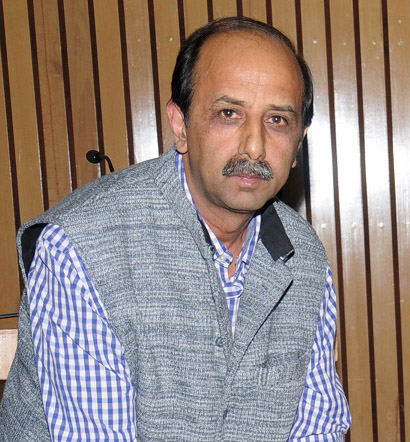
The Martyrs Monument Committee recommended a minimum of Rs 25 monthly financial assistance and a one-time aid of Rs 500 for the deserving dependents of the Martyrs. No aid was recommended where the dependents were found financially sound. The recommendation of the Committee for setting up a Martyrs Memorial Medical College in Srinagar was not carried out by any successive Governments. A medical college established in Srinagar in 1961 was named the Government Medical College Srinagar. Similarly, other recommendations like the publication of detailed accounts of the lives of Martyrs and giving them ‘their proper place in respect of National history’ were also forgotten.
(Former Director of Information, Archives and Libraries, Khalid Bashir Ahmad has authored Kashmir: Exposing the Myth Behind the Narrative and Kashmir and Jhelum: The River Through My Backyard. His latest book Kashmir: Looking Back in Time—Politics, Culture, History was published by Atlantic early this year. This detailed write-up first appeared on the author’s personal Facebook wall.)















